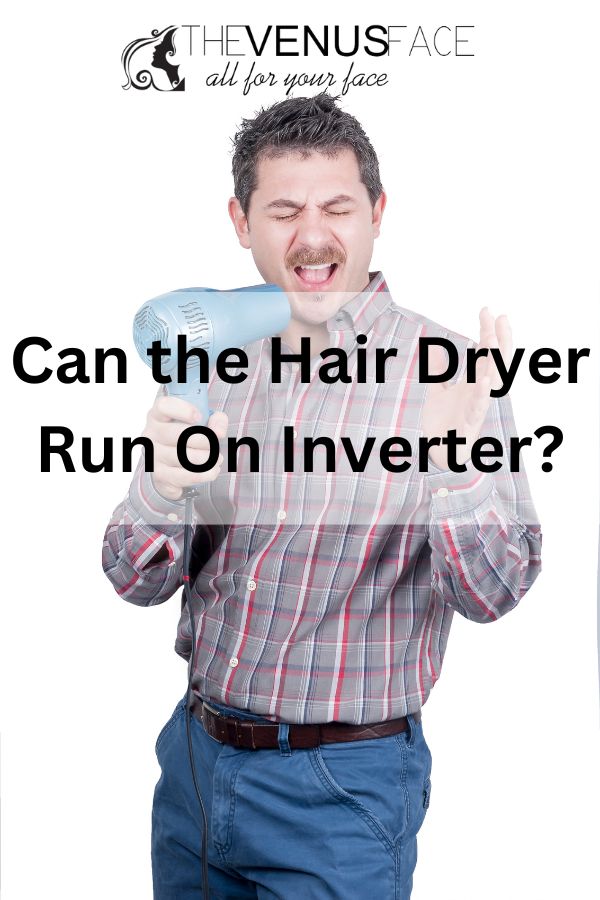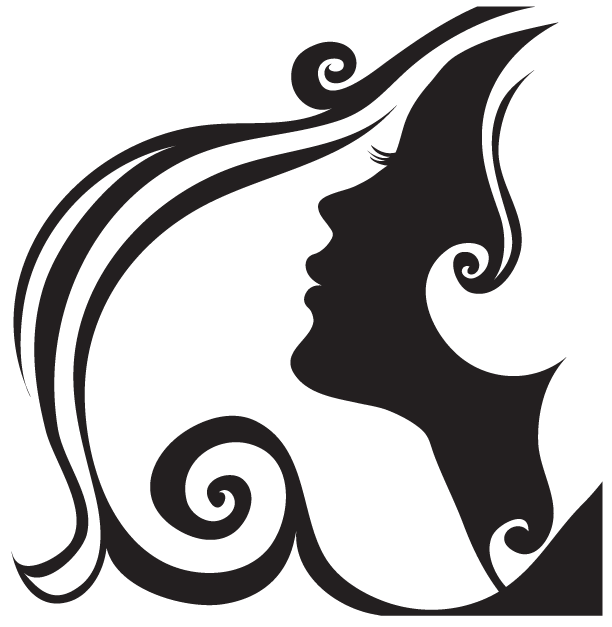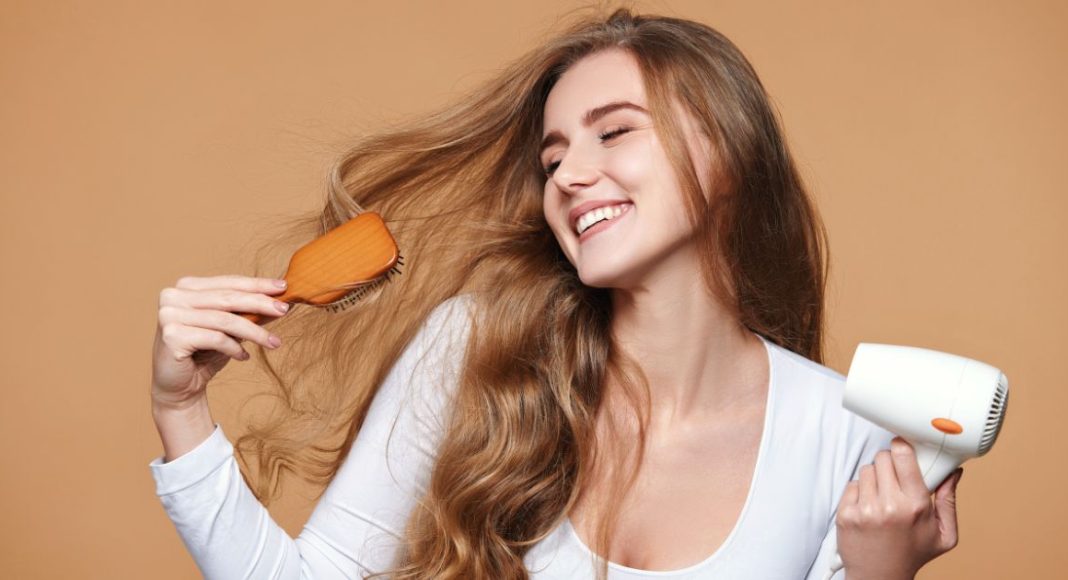Picture yourself in a world where electricity is both a boon and a scarcity, where the trusty inverter stands as the guardian of our gadgets, supplying power when the lights dim. But can it handle the tempestuous gusts of a hair dryer’s turbo mode? Will your precious inverter curl up and fizzle out, or will it rise to the challenge and unleash a whirlwind of blowing locks? It’s a clash of technologies, a duel between the grooming gods, and we’re here to narrate the hair-raising escapade. So sit tight, get cozy, and prepare to untangle the electrifying truth in our quest to discover – can the hair dryer run on an inverter?

What is an inverter?
An inverter is a device that converts DC (direct current) power from a battery into AC (alternating current) power, typically used in household appliances. While inverters are commonly used for smaller electronics like laptops and smartphones, the question arises whether they can handle the power demands of a hair dryer.
More: Can You Plug a Hair Dryer Into an Extension Cord?
Can we use hair dryers on the inverter?
Yes, a hair dryer can run on an inverter. The size of the inverter needed depends on the power consumption of the hair dryer. Hair dryers typically use between 800 and 2000 watts of power, with some high-powered professional models using up to 3500 watts.
To determine the appropriate inverter size, you should check the wattage of your specific hair dryer. If you have a 1500-watt hair dryer, a 1500-watt inverter would be sufficient. However, it’s recommended to choose an inverter with a slightly higher wattage capacity, such as a 2000-watt inverter, to ensure it can handle the hair dryer’s power requirements.
It’s important to note that the power consumption of the hair dryer will vary depending on factors such as the temperature setting and the duration of use. For example, if you use a 1500-watt hair dryer for 15 minutes a day, the power consumption will be around 375 to 400 watts.
In addition to the inverter, you will also need a sufficient battery bank to supply power to the hair dryer and other connected appliances. If you have at least a 200 Ah AGM battery bank, it should be able to power the hair dryer for a few minutes. More: Battery-operated hair dryers.
Remember to always check the wattage requirements of your specific hair dryer and choose an inverter and battery setup that can accommodate its power consumption.
More: How Long Can a Hair Dryer Run?
Best inverter for hair dryer
More: Do I Need a Voltage Converter for My Hair Dryer?
What size inverter for hair dryers?
To choose the right inverter for a hair dryer, you need to consider the power consumption of the hair dryer and select an inverter with sufficient wattage capacity. Hair dryers typically consume between 800 and 2000 watts, depending on the model and temperature settings. The heating element in the hair dryer is the component that draws the most power.
A 2000-watt inverter is generally suitable for most domestic hair dryers. However, it’s recommended to check the wattage requirements of your specific hair dryer. If you have a more powerful hair dryer, you may need to opt for a 2000 or 3000-watt inverter. It’s essential to ensure that the inverter’s wattage capacity is higher than the hair dryer’s power consumption to prevent overloading and tripping the inverter.
To determine the wattage of your hair dryer, you can check the technical specifications or user manual provided with the appliance. Alternatively, you can use a wattmeter to measure the power consumption of your hair dryer. Once you know the wattage, it’s recommended to select an inverter with at least 20% more wattage capacity than your hair dryer requires.
Keep in mind that using a hair dryer with an inverter will also require a battery bank with sufficient capacity to supply power to the hair dryer and any other connected appliances. The power drawn from the battery bank will depend on the hair dryer’s wattage and the duration of use. It’s advisable to have a battery bank with a capacity of at least 200 Ah for powering a hair dryer for a few minutes.
In summary, when choosing an inverter for a hair dryer, ensure that the inverter’s wattage capacity is higher than the hair dryer’s power consumption. Consider the specific wattage of your hair dryer and select an inverter with at least 20% more wattage capacity. Additionally, ensure that you have a battery bank with sufficient capacity to power the hair dryer and other connected devices.
More: Will My Hair Dryer Work in the USA?
Will a 1000-watt inverter run a hair dryer?
Based on the information provided, a 1000-watt inverter will be sufficient to run a hair dryer. Hair dryers typically consume between 800 and 2000 watts, with smaller hair dryers using around 800 watts and larger ones using up to 2000 watts or more. According to the sources, a 1000-watt inverter is capable of running smaller hair dryers that consume around 800 watts.
It’s important to note that the wattage mentioned for hair dryers is the maximum power consumption, and the actual usage may be lower depending on the settings and duration of use. For example, if you use a hair dryer for 15 minutes daily, the power consumption would be around 375 to 400 watts. Therefore, a 1000-watt inverter should be sufficient for running a hair dryer in most cases.
More: Why Is My Blow Dryer Not Getting Hot?
Conclusion
Hair dryers can indeed be run on inverters. However, it is important to choose the appropriate size and type of inverter to ensure compatibility and avoid overloading the system. The power consumption of hair dryers can vary, typically ranging from 800 to 2000 watts or even higher for professional models. To determine the suitable inverter size, it is necessary to consider the wattage of the hair dryer and add a buffer of around 20% to accommodate power fluctuations and other connected appliances. Additionally, the choice of the battery bank is crucial to supply sufficient power to the hair dryer and other devices. While hair dryers can be operated on inverters, it is essential to be mindful of the power draw and usage duration to avoid draining the battery excessively. Overall, with proper consideration and the right equipment, it is possible to use hair dryers with inverters, enabling their use even in off-grid or remote locations.





